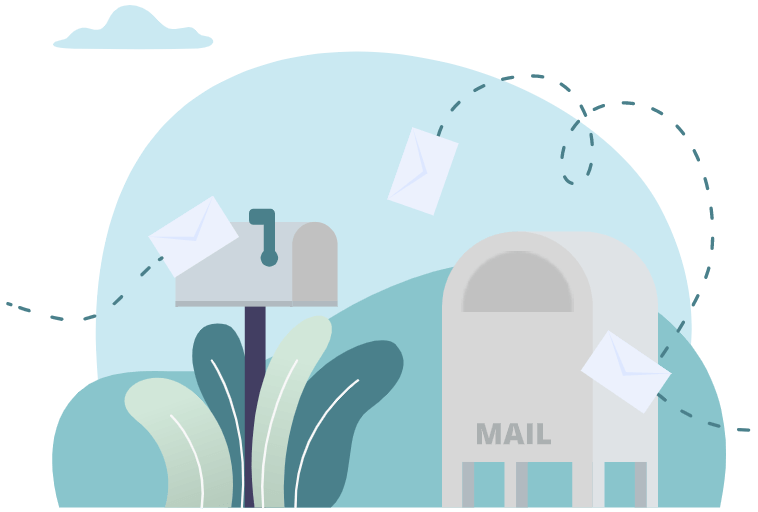Like most suburban kids, I never really understood the proverb, “a bird in the hand is worth two in the bush.”
Why is a bird in the bush worth anything? A bird in the hand sounds like a lot more trouble than it’s worth. Is the bird a pet? Is it a friendly bird? I was not envisioning a friendly bird.
As unattractive a prospect as “a bird in the hand” sounds, the lesson that the proverb is trying to impart is backed up by no-end of research.
Consider a stunning insight that a friend of mine who worked at a major telecom imparted onto me about five years ago, as I was founding Postalgia.
The year was 2015, and cell phone saturation in North America was around 80%. My friend’s job was to help increase revenue, which was largely driven by mobile phone sales. If 80% of the population had mobile phones, there was still 20% of the population left to sell to, right?
Well… not so much.
80% is approximately the adult population of the United States – so unless they were going to sell mobile plans to 10-year olds (basically a non-starter), they had essentially saturated their market.
They had two ways, and two ways only to increase their revenue:
- Retain customers through loyalty
- Take customers from other telecoms
This is what where the conversation got interesting – while other telecoms were cutting margins, running expensive ad campaigns and promotions, and spending fortunes on new products and services to try to poach customers from one another, my friend told me that the telecom that he worked for was going to double down on retaining and selling to their existing customers.
I love a good contrarian strategy, but I was worried that my friend was playing with fire. His telecom was playing defense, trying to keep their customers, while competitors were actively trying to lure them away with free hardware, predatory pricing, and temporarily attractive services.
He ended up switching jobs a few years later, but I recently asked him how the strategy played out. Apparently, it was a huge success.
They were able to engage their existing customers and promote a positive customer experience, loyalty-inducing programs, and attractive offers for existing customers instead of new customers.
While competitors swapped new customers back and forth, this telecom saw a churn rate way below the industry average. Their competitors spent a fortune acquiring new customers – they passed many of those savings on to their existing customers.
Their competitors had customers jumping from company to company, plan to plan, chasing new deals, while they promoted referrals, family and group plans, and new products to their existing customer base.
This lesson really stuck with me, and I decided to do a bit more research beyond the anecdotal evidence that this strategy had worked for a friend.
Fred Reicheld at Bain & Co has a great study on customer loyalty, chalk full of insights.
KPMG also has a solid overview on what inspires loyalty
Finally, if you’re looking for something more scholarly, Roger Hallowell of Harvard Business School has a paper on the intersection of customer satisfaction, loyalty, and profitability.
Here are a few of the key takeaways:
Switching has a cost
In the field of consumer behavior, there are conventional costs, and there are invisible costs. Things that cost your customers time, energy, or comfort may not be readily visible to them, but play a huge role in their purchasing decision. Switching has an invisible cost for your customer, and it has an invisible cost for you.
Don’t believe me? Well, would you move to a new, identical house or apartment, across the street from where you currently live, if I promised you $25 savings on your rent or mortgage every month?
I didn’t think so.
Return customers spend more than new customers
Maybe it’s because they have more time to consider their spending decisions, or maybe it’s just because they’re more comfortable spending money with your brand, but a 5% increase in customer retention produces more than a 25% increase in profit.
Putting a face to a company makes it harder to leave
No one feels guilty when they shop at one supermarket instead of another, but I’ve walked 40 minutes in the rain and passed dozens of barbers to get to my barber. He gives a great haircut, but that’s not why – it’s because he would know if I went to a different barber, and I would feel bad about that.
That’s why my aunt may forget to send me a birthday card, but my wealth manager never does; I’m not very likely to shop around for a new aunt.
Cross-sell. Up-sell. Retain.
Selling to an existing customer is the easiest sale you’ll ever make. You have a captive audience.
Servicing return customers is cheaper than servicing new customers
Not only is acquiring new customers more expensive than marketing to and retaining, cross-selling, and up-selling existing customers, servicing new customers is also more expensive.
You would be amazed how expensive it can be to on-board someone new. Just think of the 20 minutes you spend talking to the receptionist at your dentist’s office on your first visit, versus the 45 seconds you spend talking to them on every subsequent visit. Someone is paying for those 20 minutes of that receptionist’s time.
Let your loyal customers do the marketing for you
Check out this blog post on turning your donors, customers, and clients into your salespeople and fundraisers.
Want to level up your direct mail? Contact us.



